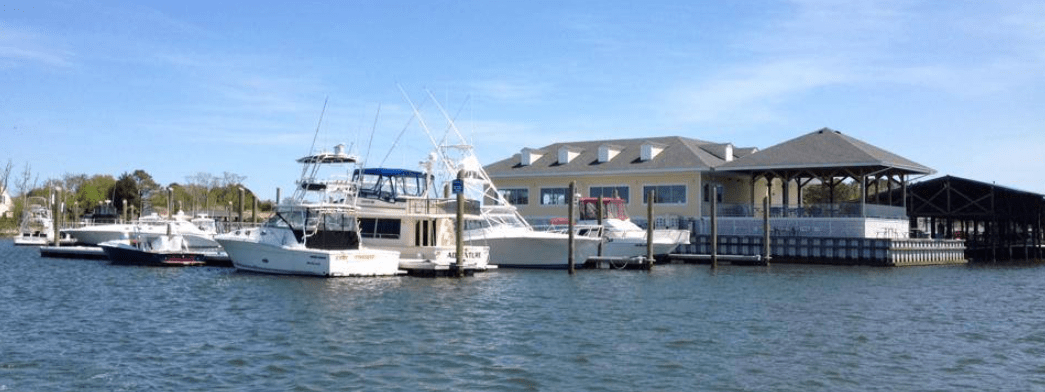Powerboats are a popular type of boat used to get out on the Chesapeake Bay; however, proper maintenance and care is essential for keeping your boat on the water for years to come. Learn more about Whitehouse Cove Marina in Poquoson, VA.
When it comes to maintenance, powerboats require regular upkeep and tune-ups due to their engines. This includes changing the oil regularly, checking spark plugs and air filters, replacing impeller blades, flushing the engine after use in saltwater and more.
Taking the time to maintain your craft will help keep it in great condition, so be sure to check your boats regularly. Doing this will ensure many safe and enjoyable days on the Chesapeake Bay for years to come!
In this article we’ll cover a few general maintenance tips to help keep your powerboat in tip-top operating condition for boating on the Chesapeake Bay. Keep reading to learn more!
Do you have questions about Whitehouse Cove Marina? Contact our marina team today. Call 757-231-1006 or request a reservation online here.
A. Regularly Change the Oil on Your Powerboat
When changing oil on a powerboat, it’s important to follow the manufacturer instructions for your specific boat. Generally, though, you should start by removing the engine cowling and locating the oil drain plug at the bottom of the engine. Once located, unscrew and remove the plug with an appropriate tool. Allow all of the old oil to drain into a catch basin or container before replacing with new oil. Once fully drained, replace the drain plug securely and refill with new oil until it reaches a full level as indicated in your owner’s manual. Finally, run your motor briefly without load to circulate then check that the dipstick is showing an adequate level once more before replacing any cowling or covers. Always be sure to dispose of old oil and filters safely.
Also, taking environmental safety precautions is always an important consideration when changing the oil on your powerboat. A few environmental safety precautions include:
- Having an oil-absorbent pad to contain any spills
- Dispose of any old oil with your local waste management service provider
- In Poquoson, used oil & old batteries can be disposed of at the city’s old recycling center behind the Municipal building
B. Check Spark Plugs and Air Filters
Checking spark plugs on a powerboat should be done at least once a year. Start by taking off the engine cowling and locating each spark plug. Gently unscrew the sparkplugs with an appropriate tool, being careful not to damage any of the wires or other components around the area. Clean the spark plugs using sandpaper, then inspect them for any visible signs of wear or tear. Replace all damaged plugs with new ones and re-install according to your owner’s manual. Lastly, start up your engine in order to ensure a full distribution of electricity throughout and confirm that all is working correctly. Always consult your manual or an expert for assistance when needed, as incorrect installation can cause serious trouble for your boat’s motor.
Changing an air filter on a powerboat is essential for proper engine maintenance. Start by locating the air filter box, typically located near the top front section of your motor. Unscrew any clasps or screws holding it in place and carefully remove the old air filter before replacing with a new one. Make sure to buy one that fits the exact specifications of your motor and replace according to manufacturer instructions if necessary. Finally, start up your engine again and check for any noticeable changes in sound or performance as these can indicate if there are any problems with the new installation. Always use caution when handling filters and take care not to damage any other surrounding components while changing out your air filter.
C. Replace Impeller Blades
Replacing impeller blades on a powerboat is an important part of the engine maintenance process. Start by removing the cowling and locating the water pump housing where the impeller blades are located. Unscrew this housing and carefully remove any old or damaged impellers before replacing with new ones. Make sure to buy ones that fit your motor’s specifications and double check all connections in order to ensure a secure replacement. After installation, fire up your motor again and make sure that everything is running properly as incorrect installation can cause serious damage to your boat’s engine over time. Be sure to consult your owner’s manual for detailed instructions if necessary, and always use caution when handling these components as they can be delicate.
D. Flush Engine After Use in Saltwater
To flush the engine on a powerboat after use in saltwater, start by turning off the engine and powering down all systems. Then, find the flushing port or hose located near the bottom of your motor and attach a garden hose to it. Turn on the water and allow it to run through for at least 10 minutes before shutting off again. Make sure to always run fresh water through your motor as saltwater can corrode components over time, leading to costly repairs or replacements if left unchecked. Finally, turn on all systems once more and check that everything is running correctly before continuing your voyage. Always be sure to review any manufacturer instructions regarding proper flushing procedures in order to best maintain your boat’s engine.
E. Clean and wax your boat regularly
If you’re looking to protect your powerboat from the corrosive effects of saltwater after a day on the Chesapeake Bay, regular cleaning and waxing is essential. Start by giving your boat a thorough wash using fresh water and an appropriate environmentally safe cleaner. Then, apply a coat of high-quality marine wax to all surfaces, paying special attention to any areas exposed to prolonged contact with saltwater. This will help form a protective barrier against further corrosion and also leave your boat looking great once more! For best results, always use marine grade supplies when cleaning and waxing your boat as these are specifically designed for use around saltwater environments. Finally, make sure to repeat this process at least twice per year for optimal protection.
F. Make sure all lights are working properly before each outing
Before heading out on the Chesapeake Bay in your powerboat, it’s essential to check all of your lights are working correctly. Start by turning on each light individually and making sure they are all lit up brightly. Replace any bulbs that appear dim or have gone out completely before continuing with your journey. Additionally, make sure all other lights such as the navigation lights, anchor light and searchlight are functioning properly and emitting a clear beam at night. Doing so will not only help you stay safe while boating but also ensure that you comply with local boating regulations as well. Ultimately, regular maintenance of your boat’s lighting system is key for a successful voyage!
G. Install a good quality cover on the boat when it is not in use
Installing a good quality cover on your powerboat is essential when you’re not boating on the Chesapeake Bay. After all, a reliable cover can protect your boat from harmful UV rays and other weather elements that can cause damage to its finish over time. In addition, it also helps prevent accidental scrapes or abrasions from happening while your boat is docked or in storage. Finally, investing in a durable cover can save you money down the road as it will help prolong the life of your boat and keep it looking great for years to come! Ultimately, no matter what type of boat you own, investing in a high-quality cover is always a wise choice.
Properly maintaining your powerboat will not only help you stay safe while boating on the Chesapeake Bay, but it will also save you money and time in the long run. By taking these simple steps you can enjoy worry-free trips out on the bay with friends and family!
Chesapeake Bay Marina Boat Slips
Are you looking for a boat slip on the Chesapeake Bay? Contact the Whitehouse Cove Marina team today to reserve your boat slip! Call 757-231-1006 or request a reservation online here.
Disclaimer: Information presented in this article are generalizations and not specific to any powerboat; boat owners should refer to a local powerboat expert and/or their owners manual before performing any boat maintenance.

